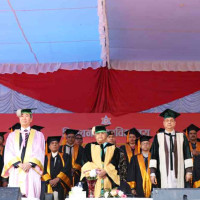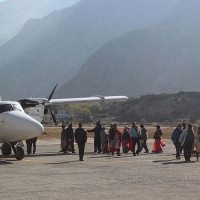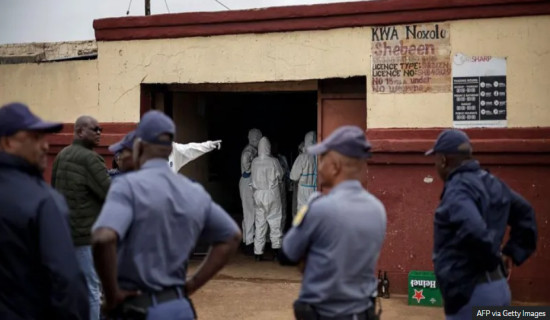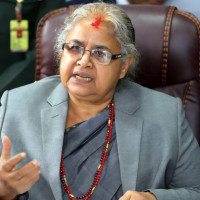- Thursday, 25 December 2025
Challenges In Executing BRI Projects
China’s Belt and Road Initiative (BRI) projects are touted to transform Nepal’s economic landscape. As the bilateral agreement was initiated amid confusion, it has faced criticisms, and the projects are likely to falter on many obstacles along the way to their successful implementation. There will certainly emerge multiple hurdles in course of the projects’ execution on the ground, but at least initially, our domestic politics, concerns over sovereignty, and geopolitical sensitivities will play a crucial role in shaping the take-offs and trajectories of these projects.
Nepal signed the Framework for Belt and Road Cooperation with China in December last year, seven and half years after the two countries signed the Memorandum of Understanding (MoU). No projects under BRI had been identified over all these years, even during former PM Pushpa Kamal Dahal Prachanda’s visit to China in 2023. That has changed now. Nepal has identified ten projects for execution across the country though they are yet to be finalised.
Clouds of controversy
However, clouds of controversy have already started hovering over these projects that include construction of roads, a cross-border railway, a city hall, an electricity transmission line, a university, a scientific centre and science museum, an industrial park, and a sports and athletics complex. Two of them have been criticised for being pre-selected for execution in the constituencies of influential politicians, for example.
Even so long after having signed the MoU, Nepal appeared ill-prepared for the eventuality that the Framework might not be signed on their own terms. And that is exactly what happened in Beijing. Nepal presented their proposal with grants as the project financing model but China rejected it and insisted on replacing the term “grants” with “assistance financing.” Eventually, the two sides ended up, agreeing on “aid assistance financing,” which does not guarantee that there would be only grant-funded projects.
Nepal’s political players are sharply divided over the financing model. During the preparation discussions, the Nepali Congress was strongly against loan-funded projects while the CPN -UML was fine with soft, rather than hard, loans. There are many more vehement critics as well as champions on both sides of the political divide.
Critics have argued that the “opaque agreement” and its lack of transparency could lead to “debt trap”, as many countries in the Global South are currently in due reportedly to loan-funded Chinese projects. They even point at the barely-operating airports in Pokhara and Bhairahawa, built by Chinese companies but are non-BRI projects, as the early signs in Nepal’s case.
Supporters, on the other hand, say that Nepal reserves the right whether to accept a BRI project that is not funded by grants and, therefore, there is no question of debt trap. They also argue that low-interest loans, if we decide to accept them, that can be paid back over a long period of time, would support, rather than hurt, Nepal’s economy. On top of that, China might eventually exempt them, they hope. Whether the projects would be financed through grants or loans, however, depends on where the funding is coming from. They are more likely to be grants if they are funded by the Chinese government. However, financial experts have cautioned that the projects are more likely to be funded by Chinese financial institutions and, therefore, more likely to be loaned.
Debt trap is a serious sovereignty issue. As evidenced by the case of Sri Lanka that was forced to lease Hambantota Port to China for 99 years after having failed to repay its debt, loss of control over strategically important locations and infrastructures is tantamount to loss of sovereignty. The widespread fear is that Nepal might meet the same fate. And at the same time, although Nepal has expressed its commitment to not allowing its territory to be used against any other country, India and China have cast doubts on Nepal’s ability to contain cross-border activities against their interests. They justify their growing involvement in Nepal as a means to advance and safeguard their respective interests.
As India faces a formidable foe to the north, its primary concern is that China could repurpose Chinese-built civilian infrastructure in Nepal — such as airports, roads, and railways — for military operations against India. This is one of the reasons why India reportedly refused to allow its airspace for international flights heading to Pokhara and Bhairahawa airports.
China is less concerned about the threats coming from the south. It is rather more focused on curtailing what it believes to be the United States’ plan to encircle China by forging ties with countries around it. Although a fellow BRICS member, China fears India’s increasing tilt towards the West. China appears to hope that successful completion of the projects would allow China a bigger presence in Nepal and, therefore, an opportunity to better prepare to defend its interests.
National interests
It looks like there is a trend. Bilateral agreements of similar nature signed earlier with India and the US also triggered controversies and faced resistance. Such conflicts have always been ideological. We have the right to accept or reject a foreign proposal but its assessment should be based on true, rather than ideologically defined, national interests. While the Bilateral Investment Promotion and Protection Agreement (BIPPA) signed with India failed to attract substantial investments as expected from Indian entrepreneurs, some projects under the Millennium Challenge Corporation (MCC) signed with the US are underway with some success.
Various factors may have contributed to the modest inflow of Indian investment; but it is not difficult to understand that US pressure played a crucial role in the successful operation of MCC-funded projects. The BRI projects will also likely succeed if China devises an implementation model acceptable to all the major political forces, makes sure that Nepal’s sovereignty is not compromised, and is sensitive to the interests of other foreign stakeholders.
(A PhD in political science from State University of New York, Buffalo, the author is a faculty member at IACER. govinda@iacer.edu.np)
















